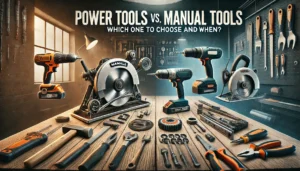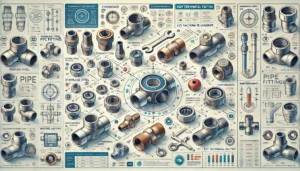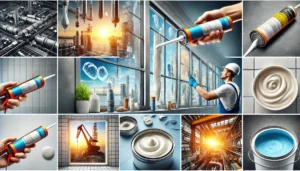Industrial valves are of utmost importance in countless industries to control the flow, pressure, and direction of diverse fluids and gas, and that includes oil, gas, manufacturing, and water treatment. These valves help with the seamless operations of the system while ensuring reliability and safety. Nevertheless, if the valves are not maintained appropriately, they can lead to Downtime, expensive fixes, or even dangerous situations. To stay away from these issues, there are maintenance practices that can be used. Here are five ways to ensure that industrial valves do not go through downtime.
1. Schedule Routine Inspection and Maintenance
Routine inspections are one of the most important steps in valve maintenance. Maintenance checks identify problems before they escalate and become outrageous. When maintenance teams do the inspection, they need to search for wear, corrosion, leaks, or damage to gaskets, seals, packing, or stems. There are also external clues such as excess vibration, noises, or the inability to properly operate the valve that point towards internal problems.
Advanced techniques, like ultrasound, and infra-red thermography will allow us to perform non visual inspections and find issues like compromised internals and weak spots. We develop an even more robust service plan for our clients by designing a structured inspection schedule based on their operating environments for the valves. Problems, when identified earlier, do not just save on expenses from repairs, but also permanently help in arteries of functionality.
2. Use Predictive And Preventive Measures
Surveilling intelligent virtual sensors will replace low precision mechanical ones. Sensors can be engineered to monitor comprehensive valve parameters and much more. Temperature, pressure and flow rate monitoring will help identify undesired behaviors of the valves. With modern engineering, we will try to make actors as close to non-ideal as possible without causing failure, and that is known as optimum. Employing Predictive maintenance on constant functioning valves will eliminate the need for repair.
Pre-planned cleaning, lubrication and limiting parts changes will help amplify the lifespan of the valve through effective Preventive maintenance. Inching the valve towards failure will create delay, but with effective switching mechanisms in place, we will not lose control of the device. Adding malices to the valves helps achieve load shedding during some serious conditions, where pressure is amplified, temperature gets elevated or even during corrosive attacks.
In comparison to post failure analysis, these techniques are considered to be optimal and increase the efficacy of the company while minimizing the trouble expected during repairs. Preventive and predictive approaches together offer a more effective solution, being able to achieve so much more than just candor.
3. Thoroughly Clean and Lubricate the Valves
In order for valves to function with maximum efficacy, they need to be cleaned regularly along with lubrication. With the passage of time, the movement of valves can be compromised because of the accumulation of debris, dirt, or mineral deposits leading to the increase of friction. These blockages can cause wear and sealing inefficiency. Smooth valve operation can be ensured with regular cleaning to get rid of contaminants.
Keeping moving parts lubricated properly reduces chances of excessive wear taking place due to the friction generated, ensuring smooth operations. Lubricants provide extra protection, reducing risk of valve parts getting stuck or jammed. It is crucial to mention that the valve manufacturer recommended lubricant should always be used. This prevents chemical reactions that could damage important parts of the valve. Valves that are maintained and cleaned properly can be relied upon even in challenging conditions, minimizing the chance of sudden failures.
4. Change Components that are Worn Out On Time
Industrial valves face constant change because of the high pressure, temperature and corrosive nature of the environment. Over time seals and gaskets, and even the seat can deteriorate, causing leaks and decreased valve performance, and sometimes valve failure. One example is, a jet motor with a compromised seal would allow gas or fluid to escape, leading to system inefficiency and potential safety hazards.
Performing routine inspections of critical components is imperative in circumventing such issues. Any parts that are worn or damaged must be replaced instantly to prevent further issues. Maintaining a stock of frequently replaced components allows for a swift substitution, thereby reducing downtime. At the same time, inferior parts which supposedly meet thevalve’s specifications should never be used, as their performance and durability would greatly damage the valve. Timely replacement of outlived components not only improves the performance of the valves but also elongates the lifespan of the system as a whole.
5. Maintain Detailed Maintenance Records
Routine maintenance management practices usually create a detailed report of every maintenance exercise that is undertaken, which serves as an important resource in ensuring continuous reliability of the valve. These records give a brief historical perspective of the service each valve has gone through in respect to performance, repair, inspection, replacement of parts, and what problems that had. This record enables maintenance teams to determine the frequency of specific problems, plan for corrective maintenance, and schedule maintenance work safely and efficiently.
Maintaining a maintenance record is starting to be an integral part of removing valves and controllers from the chosen process for integration. In these cases, audits and inspections can be made without the need to interact physically because customers have given the proof required. As a case in point, a decision to replace an existing controller may be made on the basis of the frequency of its repairs. Keeping such detailed records allows an organization to fine-tune and target their maintenance program towards reducing failures, minimizing system downtime, and increasing system efficiency.
Additional Best Practices.
In addition to the fundamental five, there are other supplementary tips that can be useful to maintain working valves.
- Training Maintenance Personnel: Train maintenance staff on the differing valves’ controls and the modern repairs conveniences available.
- Valve Testing: Some valves should be tested from time to time to evaluate their performance under well controlled conditions.
- Business Environment Protection: Use protective coating/ enclosure to constrain valves from ruthless I extreme external conditions like temperatures, moisture, or corrosive atmosphere.
- System Design Considerations: Design piping systems such that valves are not mechanically stressed, for example, by excessive vibration or pressure surges.
Conclusion
The importance of industrial valves cannot be overstated when it comes to controlling the flow of fluids and gases in a system. These valves should be properly taken care of through both planned and unplanned maintenance. Regular inspections and cleaning, as well as replacing any worn components and keeping a detailed log of maintenance actions will greatly reduce the chances of system down-time and lost productivity.
These important maintenance processes will help not only avoid problems, but improve the safety and productivity of the system. For those industries that depend on continuous operation, valve maintenance is something that will guarantee positive returns over time. These businesses will be able to control their processes competitively, which is the reason why caring for valves should be done proactively instead of waiting for problems to occur.










